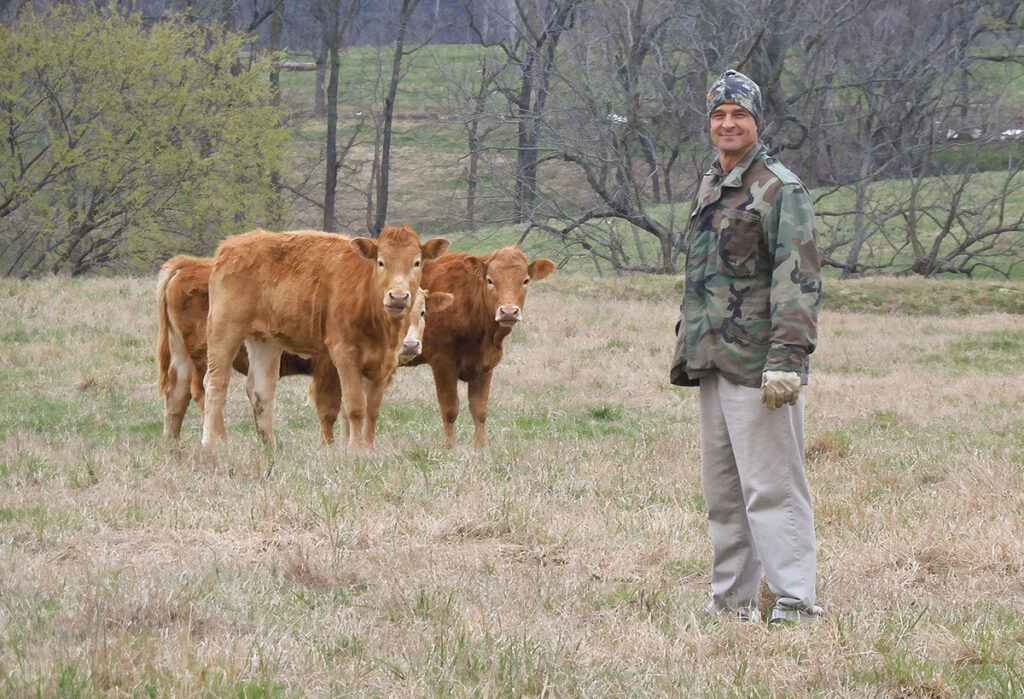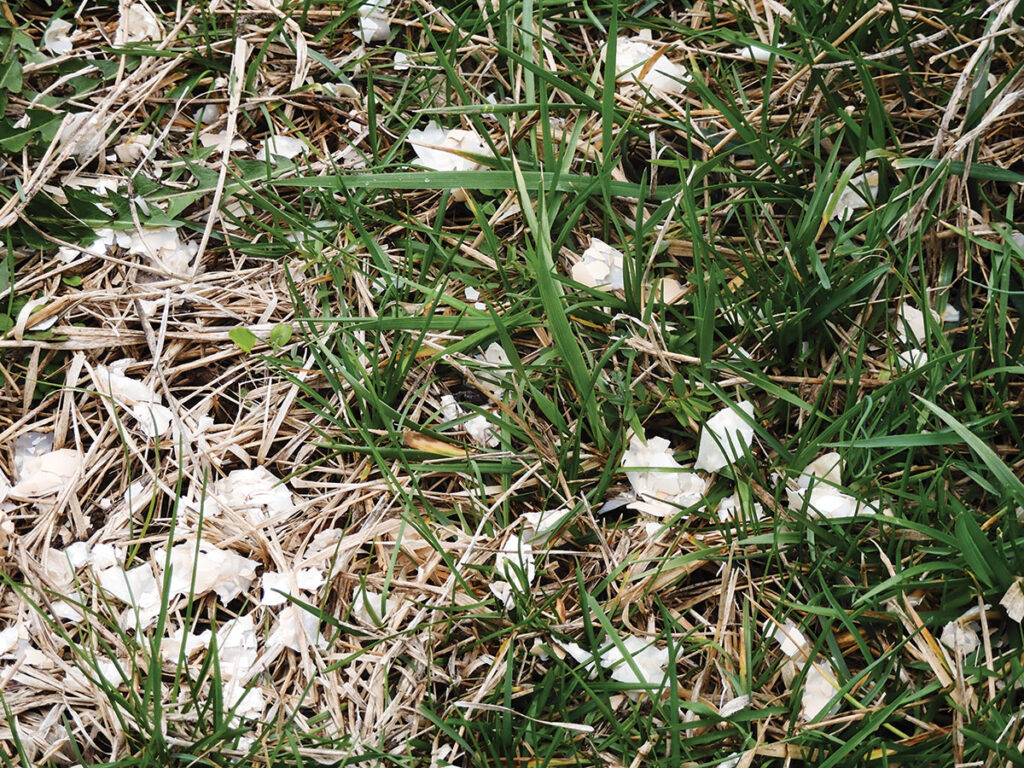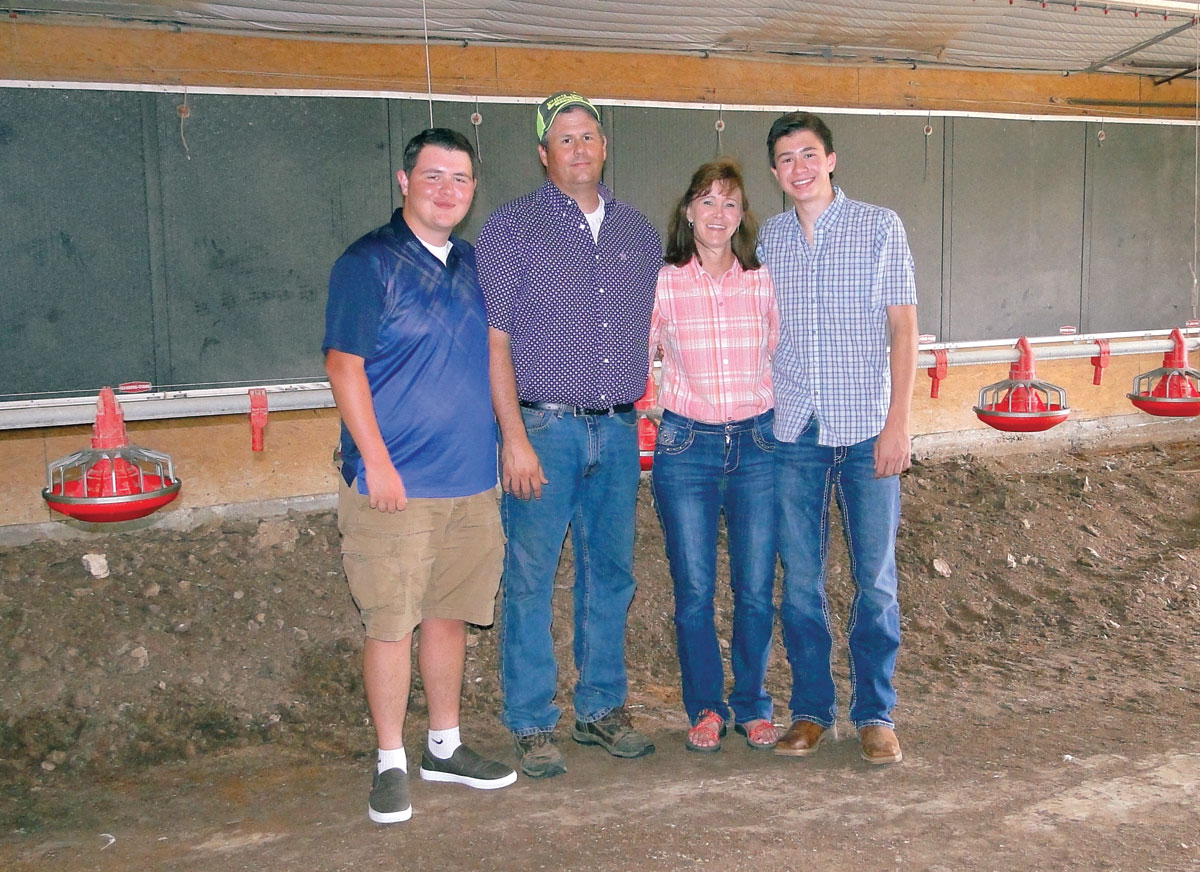
Greg Anderson opted for Gelbvieh cattle after learning about the breed in college. Photo by Terry Ropp.
As a kid, Greg Anderson did not like farming, but he did like cattle
SPRINGDALE, ARK. – Greg Anderson of Springdale, Ark., was raised in southern Minnesota on a corn and soybean farm blessed with rich, black soil.
The farm also had a variety of animals, including cattle, pigs, chickens, geese and ducks.
As a boy, Greg hated farming and saw himself as free child labor. He drove a tractor at 7, a cultivator at 9, and a planter at 12. He was responsible for feeding the animals twice a day, while getting used to the fact they were “harvested,” which doesn’t even begin to cover how he felt about the dreaded garden.
“I never did like farming much, but the cattle side of it spoke to me,” Greg said. “After graduating from high school, the only logical thing for me to do was start my own farm. However, I chose to add 200 head of feeder cattle to the 350 acres of row crops I grew on land I rented.”
During those early years, Greg became interested in what it took to help an animal reach its full potential. Then the financial crisis of the 1980s hit, and, at 25, he sold his farm due to very high-interest rates and paid the off the bank.
That loss set the stage for the lifetime of studying and learning about cattle as a secondary career. Greg went to college to study animal science. He delved deeper into the insight that potential existed in each animal influenced by many factors, including husbandry and the science of growth.
His long-range agricultural goal was to pursue his interest in the Gelbvieh breed because it is one of the dual-purpose breeds (draft and beef) he learned about during college, and because it is a heritage breed he wanted to preserve. Developed in the 1850s, Gelbvieh is one of the oldest German cattle breeds.
After college, Greg worked for Sontegard Foods, a wholesaler of shell eggs and powdered, liquid and frozen egg products. Greg worked in several states before coming to Northwest Arkansas about 20 years ago, where he is now the plant manager.
Greg’s Arkansas venture began with the purchase of a small 24-acre farm just outside of Springdale. That purchase was the first step in buying adjacent properties as they came up for sale through the years. He now has 200 acres purchased in eight separate pieces. The key to his plan was a flat 20-acre piece sold to someone else.
“Not much later, the new land owner was forced to sell, and I got an unforeseen Christmas present,” Greg said.
Another part of his venture was becoming a member of what he affectionately calls his “Northwest Arkansas grazing group.” The group informally shares observations and methods and is an information “gold mine.”
Greg’s Gelbvieh herd started with three purebred bred cows, later supplemented by bred heifers. He bought his cattle from several locations and maintains a herd of 30 to 40 breeding females, using line breeding to refine his health and conformation genetics.
“Line breeding is not a favored method in the cattle industry, and you need a fair number of animals to begin, so you have a broad enough genetic base to work with,” Greg explained. “I cull and sell all calves that don’t meet my standards. I raise all of my own replacements to protect my evolving genetics and cull only when an animal is no longer productive, usually due to feet or reproduction issues.”
One of Greg’s greatest pleasures is watching someone drive by his cattle, and back up to take pictures.
Greg began his cow/calf career with selected calving seasons but wanted better results. Spring calving seemed to result in serious calf scours and subsequent deaths from digestive systems insufficiently developed to handle fescue pastures. He then began running his main breeding bull with mature cows year-round, resulting in healthier calves and few losses. Another, smaller-framed, farm-raised bull breeds first-time heifers.
“Mother Nature does a pretty good job if you leave her alone, and it’s my job to carefully observe what goes on so I can take advantage of the opportunities and conditions she provides,” Greg said.

One important example of using observations is Greg’s intermittent rotational grazing/fertilizing system. The cattle are accustomed to moving from pasture to pasture in a specific pattern. When they need fresh grass, they cluster at the gate to the next pasture. Greg fertilizes the pastures the herd rotates from with sludge/semi-solids from his septic business and eggshells from the “egg-breaking” plant to add lime. Amounts are determined by annual soil testing mandated by his ownership of the septic business.
An advantage to Greg’s rotational system is that it allows fertilizing materials ample time to be absorbed naturally. The resulting forage nutritional value is so high his cattle need little hay during the winter. Some winters, he feeds no hay, and this last winter, the herd required fewer than 20 bales. Much of his land is characterized by hills and gullies, so during the severe cold streak this winter, the cattle sheltered in a gully with fresh running water that is naturally ground-filtered due to an unusual land formation. No ice breaking was necessary, only a daily ration of hay. Because Greg sees erosion as unnecessary destruction of good land, Greg terraces wherever needed to control water flow so stormwater is helpful rather than harmful.
Another of Greg’s observations was that the cattle did not eat free-choice mineral throughout the year but, seasonally. To compensate, Greg feeds corn chops mixed with mineral year-round, significantly reducing parasite, hoof and potential reproductive problems. The result is that during those times when cattle choose less or no mineral, they still receive some through the corn chop mix.
About 15 years ago, Greg eliminated annual vaccinations because he observed the strength of his herd’s health. His cattle herd is not isolated due to contiguous neighboring cattle, which points to herd health as the most likely reason for the success of the vaccination-free protocol.
As for the future, Greg is looking toward further developing his farm as a high-end agritourism destination, complete with housing. The goal is to serve the community as an agriculture ambassador through intensive access to nature and agriculture in a safe and fun environment. His entrepreneurial nature is not from thinking outside the box but rather ignoring it. He is creative, productive and eager to share with those who yearn for something other than concrete.







